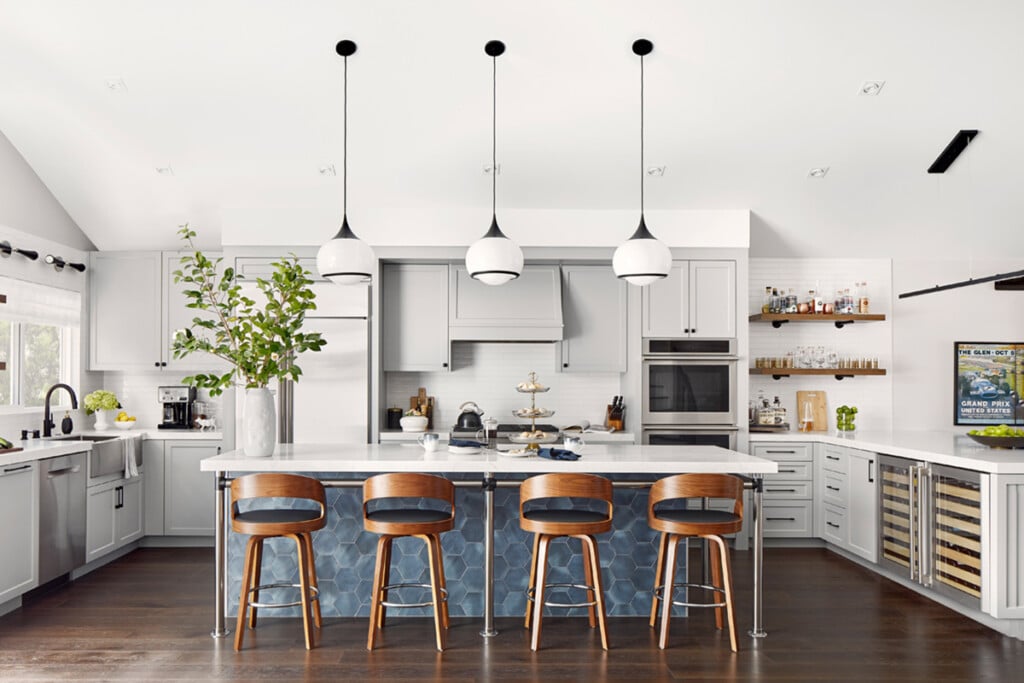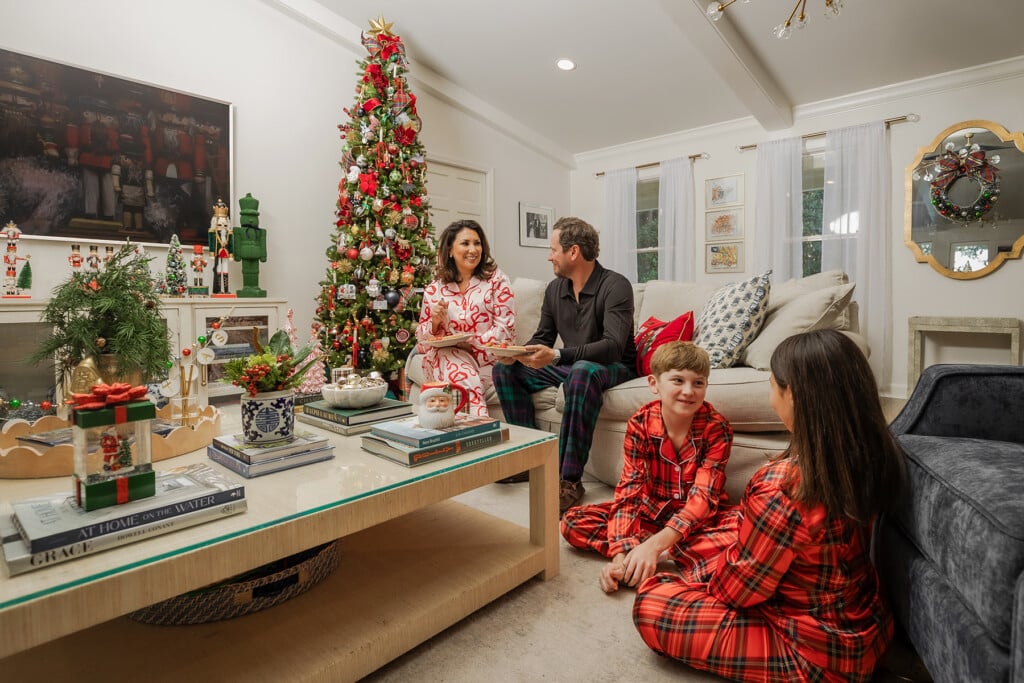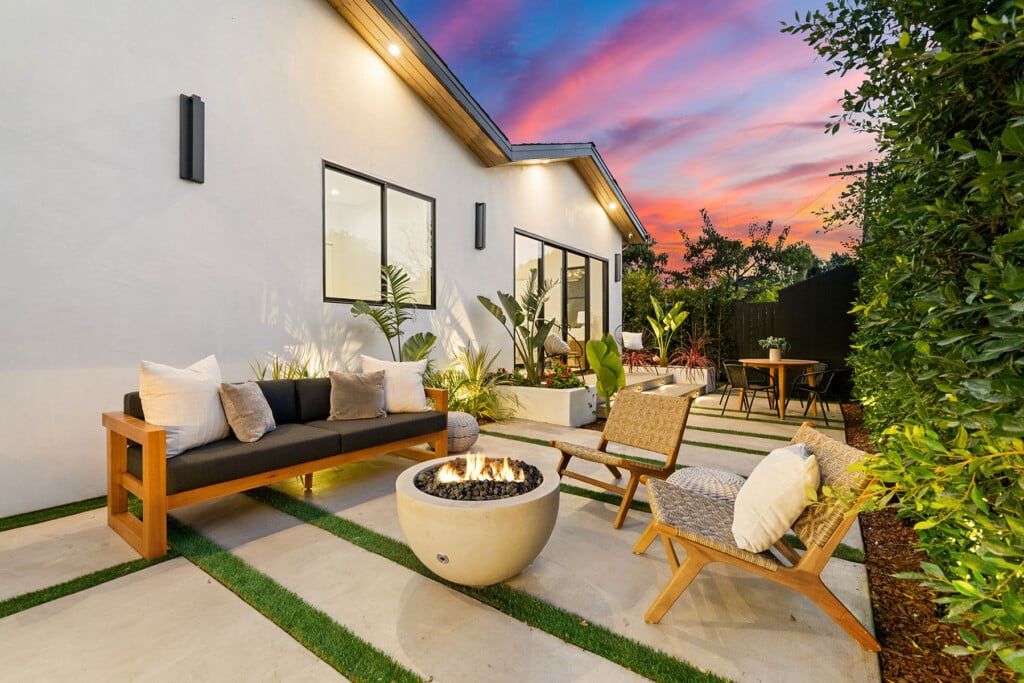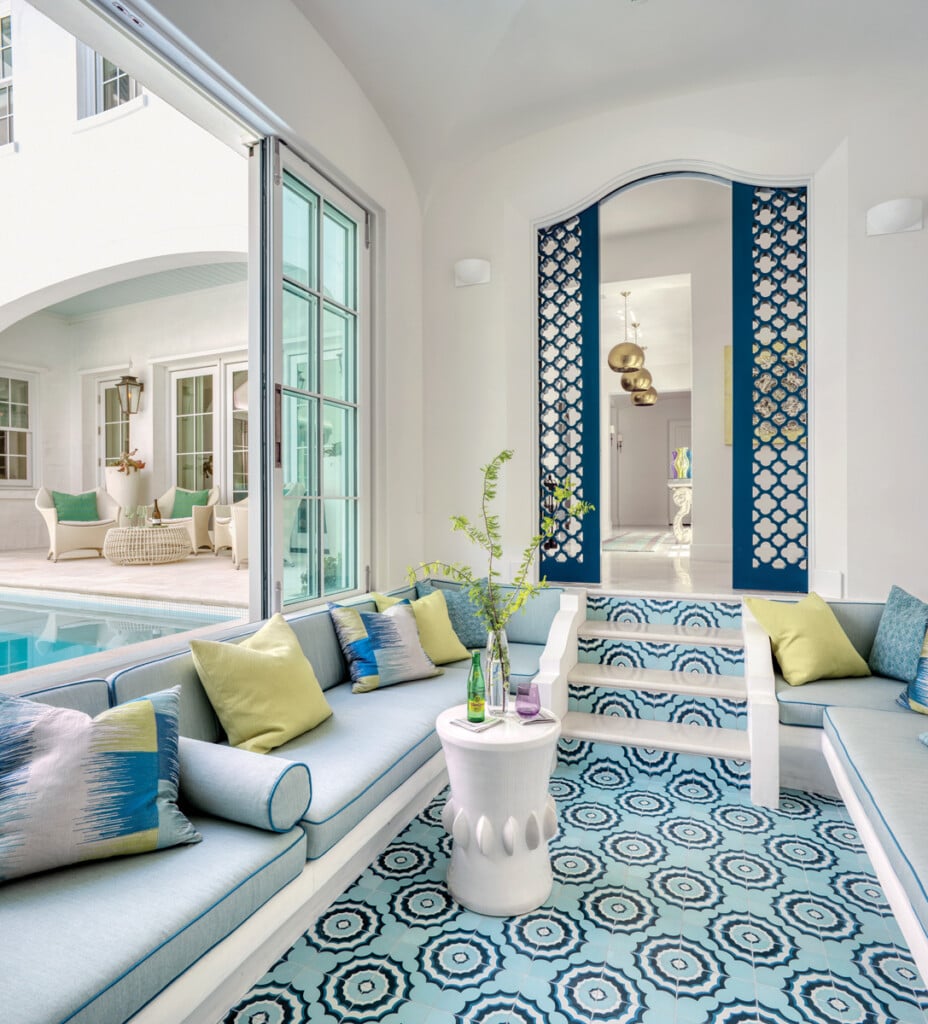Island Time
Adding versatility and style to your kitchen

A kitchen island is a must-have for the modern home. That isn’t likely to change anytime soon. Designers say that the island is simply too valuable an upgrade to give up. It has become the reliable, show-stopping stand-in for cabinet storage and counter prep space when walls come down, and it has emerged as a favorite spot for casual meals, entertaining and homework.
The first kitchen island that we know of was created by Frank Lloyd Wright in 1937. Designing for Nancy and Malcolm Willey of Minneapolis, he opened up the area between the kitchen and living room to help Willey connect with guests while preparing food and drinks. The idea took hold, with more and more islands showing up in new homes over the years. Today, no renovation seems complete until the homeowner asks, “Can that wall come down?”

Designers say that kitchen islands are seen as so valuable that they have become all but indispensable. Once, houses were built around hearths. Now, kitchens are built around islands. They have become the reliable, show-stopping stand-in for cabinet storage and counter prep space. Photo courtesy of National Kitchen & Bath Association
“It’s like the hub of the house,” said Kim Schneider, owner of Coastal Design by Kim. “It’s just becoming more functional, especially for people who entertain a lot and also with kids for homework.”
Schneider sees islands as having replaced the once-common kitchen table, now serving as the everyday gathering space for families of four to six, while dining tables and rooms remain a space for more formal gatherings and holiday meals.
Design Trends

According to organization spokesperson Julia Gillespie, 76% of National Kitchen & Bath Association designers said that large islands that function as dining tables are now a top trend. The so-called “freedom islands” offer versatility provided by additional open space. Photo courtesy of National Kitchen & Bath Association
As the kitchen island grows in popularity, homeowners look for new ways to suit the design staple to their lifestyles. The National Kitchen & Bath Association is the premier source of research related to these trends, and according to spokesperson Julia Gillespie, 76% of NKBA designers said that large islands that function as dining tables are now a top trend.
Designer Stacy McCarthy of NKBA’s Florida chapter sees this trend play out in islands without sinks or countertop appliances. She calls them “freedom islands” because of the versatility offered by additional open space.
“At first, the digression of sinks and cooktops seemed a surprise, but bringing back a bit of separation to kitchen tasks is better for entertaining, family homework sessions and relaxation,” she said. “It provides more of that family table feeling when water and cooking don’t get in the way.”
Aesthetically, the island now serves as a pop of color, according to an NKBA survey. And Emerald Coast designer Schneider actually deems it best when the island doesn’t match the rest of the kitchen, making a design statement. She noted that a mossy green shade is trending right now for kitchens and can be a perfect complimentary pop. For a bold statement, she suggests an eggplant purple.
Tessa Boudreaux of Jansen Kitchen & Bath in Pensacola agreed, commenting that using a different color for the island than the rest of the cabinetry helps to “anchor it to the room and make it the focal point it deserves to be.”
Schneider noted that wood tones are making a comeback for neutral shades, but that gray is officially out.
Other design elements can range from selecting unique hardware to choosing a statement countertop. Schneider suggests incorporating a different style or color of granite or quartzite or even opting for butcher block instead.

The island now serves as a pop of color according to an industry survey. Emerald Coast interior designer Kim Schneider suggests a unique style or color choice for counters and cabinetry. Deep greens and eggplant-inspired purples are trending for cabinets, while granite, quartzite or butcher block can create eye-catching countertops. Photo courtesy of National Kitchen & Bath Association
Warning Words
Homeowners may clamor for islands, but Boudreaux and Schneider agree that not everybody should have them. An island shouldn’t hem you in. There has to be plenty of room to move around freely and accommodate open refrigerator and oven doors.
“Islands aren’t always the best use of space in a floor plan,” Boudreaux said. “Very large islands, which have become so trendy, can be especially problematic. I will personally convince people not to do them if they don’t make sense, but I really have to go to bat defending my views.
“I feel that there’s a shift in the trend toward those wide open spaces,” she added. “Lately we’re seeing people wanting to open walls a little, but still keep their spaces a bit more separated. We have even put in a few kitchen walls lately.”
Open floor plans and large islands may be popular, but bucking the trend could be the best option for certain spaces. Whether large or small, colorful or muted, the kitchen island is here to stay.
Paige Aigret contributed writing to this story.


